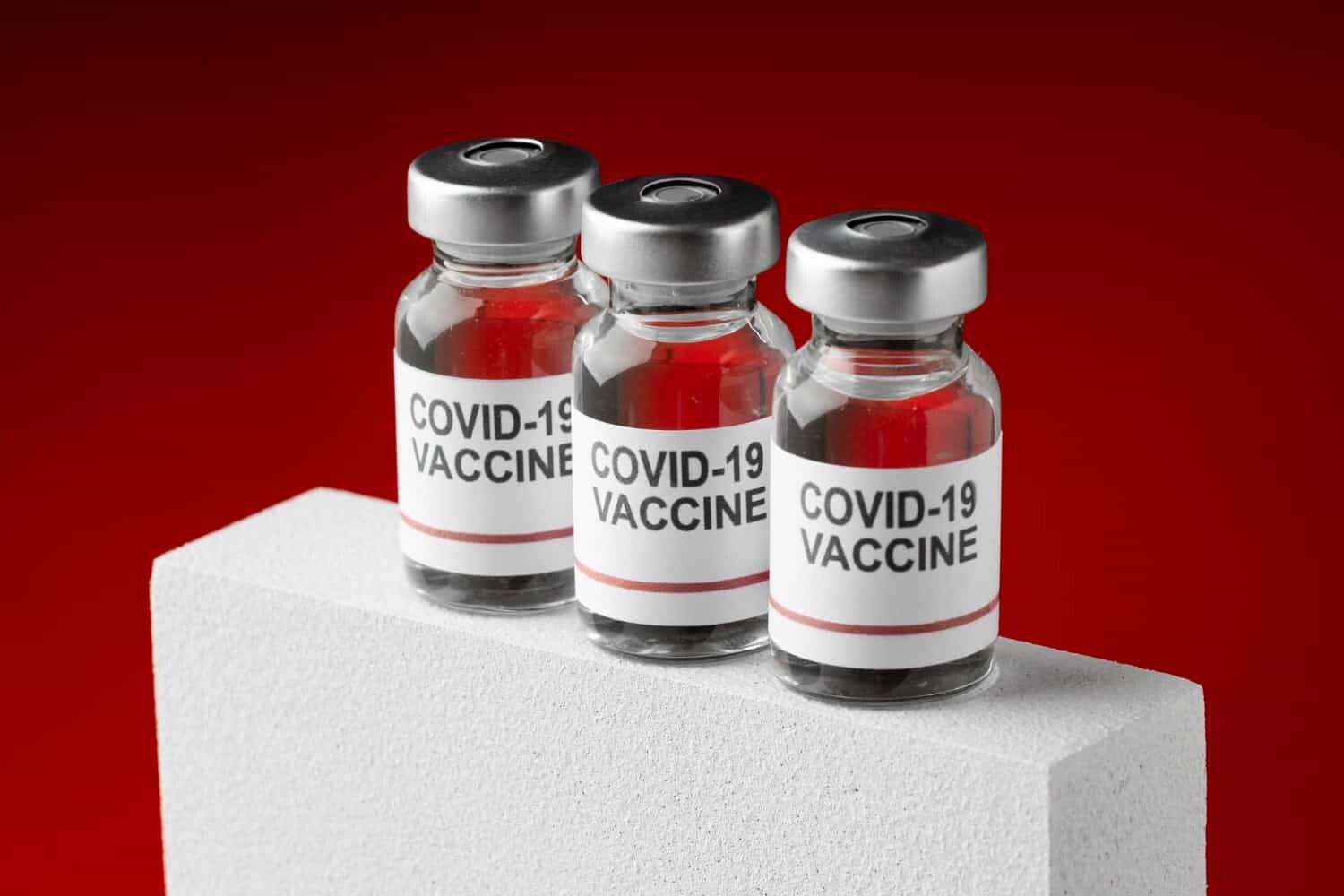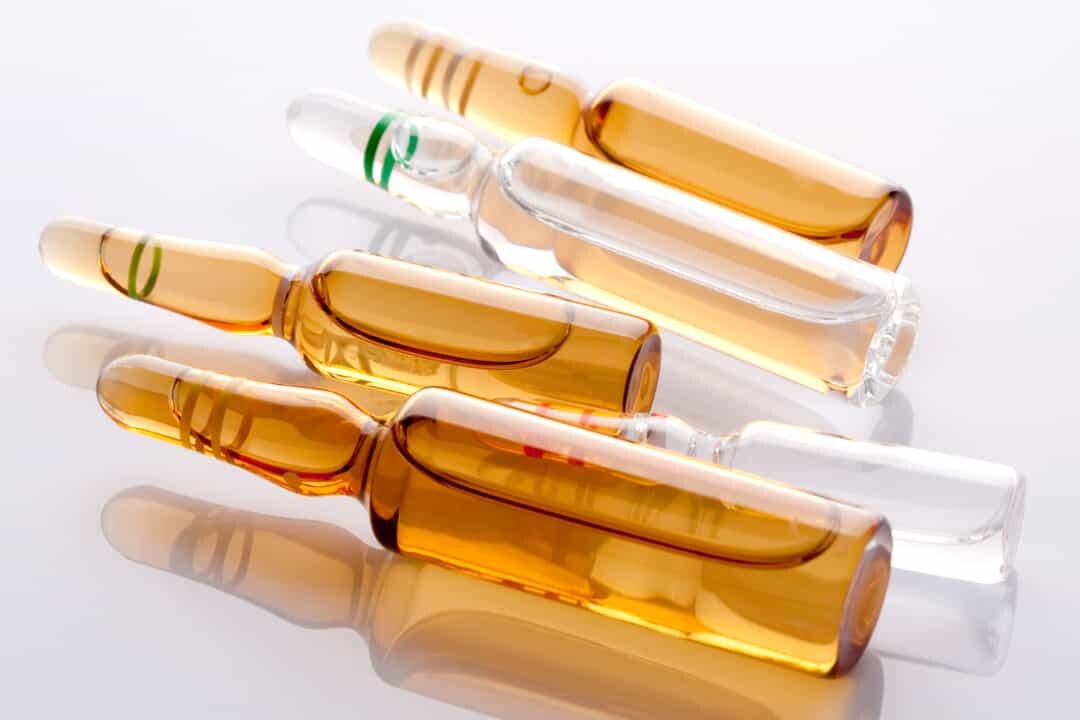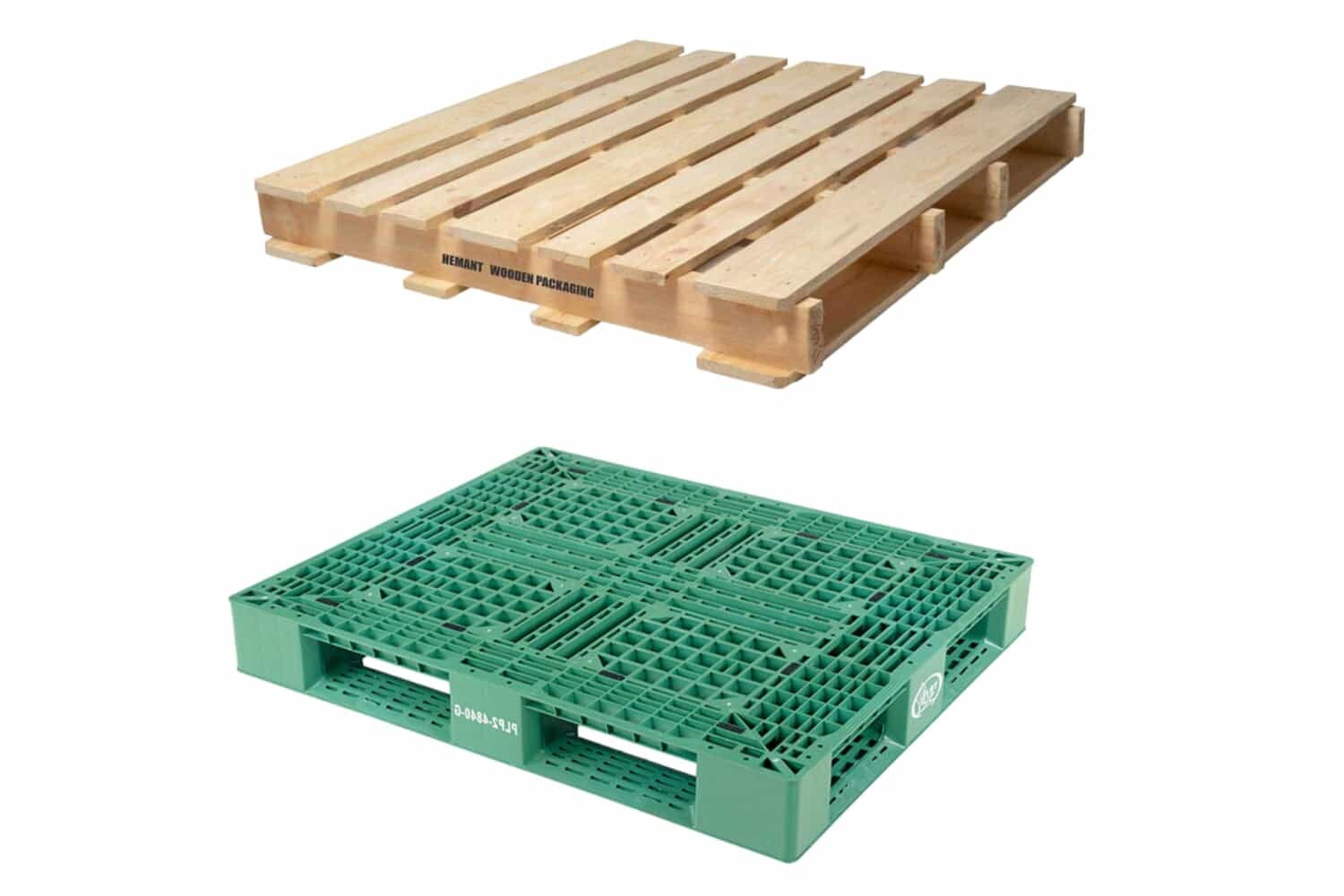Different Types of Pharmaceutical Packaging and Their Uses
If you're a pharmaceutical manufacturer, can you imagine how frustrating it would be for your customers to find a broken pill bottle? Whether you're just starting out or have been in the pharma industry for years, understanding packaging is really important. Getting familiar with the different types of pharmaceutical packaging is a great place to start. Curious to learn more about what kind of packaging might be best for your products? Let's unpack everything you need to know!

Why is Pharmaceutical Packaging So Important?
Protection: Most medications can lose potency when exposed to light and moisture. Packaging shields them from physical damage, contamination, and environmental factors. This helps ensure your medication remains effective until its expiration date.
Safety: It would be a big deal if the drug has been opened before it reaches you. Proper packaging uses shrink bands, induction seals, breakable caps, or tamper-evident labels to ensure that the medication is secure. For example, child-resistant packaging also helps protect children from accidental ingestion.
Regulatory Compliance: Good packaging comes with clear information about the medication. This helps consumers know what and how much they're going to take. Plus, pharmaceutical packaging must meet strict regulatory standards. All these are to ensure the quality of the product and the health of patients.
Convenience: Other than protection, packaging can make medication easier to use, store, and transport. Thoughtfully designed packaging is simple to open and convenient for travel. It also can be made with sturdy materials to absorb shocks during transport. Barcodes or RFID tags allow for easy tracking of the medication.
Branding and Information: Packaging is a communication tool. Except for what the medication is and how to use it, packaging provides important information about storage, expiration date, manufacturer, and precautions. It helps build brand identity and trust with consumers.
Waste Reduction: More and more pharmaceutical packaging applies eco-friendly materials and minimalist designs. These practices reduce carbon footprint and promote environmental responsibility.
Different Types of Pharmaceutical Packaging
Pharmaceutical packaging is not one-size-fits-all because there are diverse medication types. These medications need tailored packaging solutions to remain safe and effective. That's the reason why you can find such a wide variety of pharmaceutical packaging styles. Confused about which one fits your products? To make things simpler, they actually can be summarized into three major types: primary, secondary, and tertiary packaging.
Primary Pharmaceutical Packaging
When you unpack a pharmaceutical product, primary packaging is the layer of packaging that comes into direct contact with the drug. The main job of primary packaging is to shield the drug from moisture, light, and contamination. It acts like the last fortress that safeguards the safety and effectiveness of the drug.
Let's take a look at some common primary pharmaceutical packaging types:
Blister Packs

Description: Blister packs are made by forming plastic into pockets or cavities to hold medications. They're sealed with aluminum foil, paperboard, or plastic film. This seal usually has important drug information printed on it.
Uses: Great for packaging solid medications like tablets and capsules. They're very popular in Europe and also used in North America.
Advantages:
1. Keep your meds safe from contamination, moisture, and germs
2. Easily punctured to pop out the pills
3. Allows for quick identification of the drug inside
4. Use less material and are cheaper to make than other types of pharmaceutical packaging
Bottles

Description: Bottles are one of the most common types of pharmaceutical packaging. They come in glass and plastic. They're often found in amber, green, cobalt blue, and white. These colors can protect drugs from UV light.
Uses: Glass bottles are often used for liquid medications. Plastic bottles are used for tablets and capsules. They come in various sizes and shapes and can be easily labeled for identification.
Advantages:
1. Provide excellent protection against external factors
2. Plastic bottles are durable and flexible
3. Glass bottles offer enough visibility while shielding sunlight.
4. Come with tamper-evident seals and child-resistant caps for added safety
Vials

Description: Vials are small containers made from glass or plastic. They hold liquid, solid, or powdered medications. The packaging is often sealed with various types of closures. You can find crimp caps (rubber stoppers and metal caps), screw caps, or plastic stoppers.
Uses: Glass options are commonly used to store injectable medications. Plastic ones hold solid and powdered drugs.
Advantages:
1. Secure sealing and easy access
2. Glass vials provide excellent protection, and plastic vials are shatter-resistant
3. Offer a larger storage capacity compared to ampoules
4. Versatile and flexible to store liquids, solids, and powders
Ampoules

Description: Ampoules are small glass containers. They're used to hold single doses of liquid medications. Ampoules are hermetically sealed by melting off the top to keep the content sterile.
Uses: Mainly used for vaccines and injectable drugs.
Advantages:
1. Hermetically sealed, protecting sterile medications
2. Hold single doses to reduce the risk of contamination
3. Great for sensitive pharmaceuticals due to glass material
4. Recyclable
Sachets

Description: Sachets are made from plastic and are small and lightweight. They're available in various shapes and sizes. Sachets are typically easily torn open by hand.
Uses: Ideal for on-the-go medication needs. Primarily used for packaging single doses of powdered or granular medications. They are also used for liquids in some cases.
Advantages:
1. Portable and easy to use
2. Flexible laminate material provides excellent barrier protection
3. Affordable packaging option
4. Environmentally friendly
Tubes

Description: Tubes are cylindrical, semi-rigid containers. They often come in plastic or metal options. Tubes are ideal for packaging semi-solid formulations. They use caps to keep the content safe and hygienic.
Uses: Used for packaging creams, ointments, gels, and lotions. They're one of the most popular types of pharmaceutical packaging in dermatology and cosmetics.
Advantages:
1. Allow for accurate and hygienic dispensing, minimizing waste
2. Both plastic and metal tubes provide an airtight environment to keep the medication fresh and effective
3. Squeezable, user-friendly, lightweight, and great for on-the-go use
4. Budget-friendly packaging solution
Secondary Pharmaceutical Packaging
This is a layer of packaging that encloses the primary pharmaceutical packaging. If you say the primary packaging directly protects the drug, the secondary packaging safeguards them both. It can group multiple primary packages together. Secondary packaging is usually printed with drug facts, usage instructions, expiration dates, and barcodes. It helps ensure the product is safely transported, stored, and easily identified.
Here are some examples of secondary packaging:
Folding Cartons

Description: Folding cartons are paper-based containers. They're one of the widely used types of pharmaceutical packaging. This secondary packaging comes in various sizes and can handle almost all kinds of medications.
Uses: Protect and organize the primary packages we mentioned above. Offer ample space on the surface to showcase important medication and brand information.
Advantages:
1. Add an extra layer of protection for primary packaging
2. Provide sufficient space for drug information
3. Made from renewable materials like paperboard
4. Can be branded with logos and essential information, serving as a marketing tool
Wallets

Description: Wallets are a kind of innovative secondary packaging. This packaging is typically made from recyclable paperboard or biodegradable plastics. The compact design can securely hold blister packs or other primary packaging. Wallets help arrange the administration doses and schedules for consumers.
Uses: Primarily used to hold and protect blister packs. They also aid patient compliance by organizing doses and providing clear instructions.
Advantages:
1. Enhance protection of medications
2. Help patients follow their medication schedules
3. Child-resistant yet senior-friendly
4. Can be customized with instructions
Tertiary Pharmaceutical Packaging
Tertiary packaging is like the outermost armor for medications. It's made mainly for shipping and storage purposes. With this packaging, multiple smaller boxes or packages of drugs can be grouped together. However, the packaging is often not seen by consumers. It would be removed before putting the pharmaceutical products on the shelf. Tertiary packaging makes it easier to handle and move large quantities of products securely and efficiently.
Below are some common types of tertiary packaging:
Boxes

These are probably the most familiar types of pharmaceutical packaging to manufacturers. Most medication products leave the facility with this kind of packaging.
Boxes can be divided into single-walled cardboard options and multiple-layer corrugated ones. The former is suitable for lighter and smaller items. The latter is more sturdy and ideal for heavier items. Boxes can be recycled, making them a practical and eco-friendly option.
Pallets

This packaging comes in a flat construction. It's used to transport large quantities of pharmaceutical products. There are plastic and wooden pallets available.
They can be easily transported by forklifts and other machinery. For pharmaceutical warehousing and shipping, pallets make handling more efficient.
Stretch Wrap

It is a plastic film that's tightly wrapped around the secondary packaging to keep products secure.
Stretch wrap stabilizes items on a pallet. This helps prevent these items from shifting or getting damaged during transit. Plus, it provides a protective barrier against dust and moisture.
What Machines Are Used for Various Types of Pharmaceutical Packaging?
So, how do you package products with these types of pharmaceutical packaging? Machinery is the best way to go in the modern pharma industry. A bunch of specialized machines are available to get the job done efficiently.
Filling Machines
First off, we have filling machines. These can handle both solid and liquid products. For solids like capsules, tablets, and powders, filling machines count or measure out the product and then fill them into bottles or vials. They often integrate with capping and sealing machines to create complete secondary packaging.
Blister Packaging Machines
If you're producing tablets or capsules, let's talk about blister packaging machines. Unlike filling machines that use premade containers, blister packaging machines form the packaging themselves. When a plastic sheet enters, the machine turns it into plastic bubbles to hold individual doses and seal them with foil.
Cartoning Machines
Next, we have cartoning machines. These machines erect and shape the cartons. Then, they insert the products into the formed cartons and seal them up. Cartoning machines can handle a variety of primary packages like bottles, vials, and sachets.
Labeling machines
Then, there are labeling machines. They ensure that every package is attached with the right information. Whether it's a bottle, carton, or anything else, these machines slap on labels with all the necessary details about the products inside.
Case Erectors and Sealers
We also have case erectors and sealers. These handle the bigger cardboard and corrugated boxes that hold all those smaller packages. The erectors fold flat cardboard into sturdy boxes. The sealers make sure they're closed and ready to hit the road.
Shrink Wrapping Machines
Now, shrink wrapping machines are on the stage. After products are boxed up, these machines wrap a plastic film around the items and then heat them so the film shrinks tightly around the boxes. It's like giving your products an extra snug, protective hug to keep them secure and clean.
Palletizing Machines
Lastly, there are palletizing machines. It's impossible to organize and stack hundreds of boxes by hand. These machines take care of that for you. They can neatly place boxes onto a plastic or wooden pallet in organized layers. If you want to ensure everything is stable during transit, a stretch wrap machine can give you a hand here. The machine uses elastic film and stretches it around the products and the pallet to hold them in place.
Final Word
Pharmaceutical packaging is more than just a box or a bottle. Whether it's primary, secondary, or tertiary packaging, each type plays a key role in keeping the medication safe. If you're part of the industry, staying on top of the latest types of pharmaceutical packaging is critical. We expect this blog post to inspire you with more innovative packaging ideas. Need more insights on pharmaceutical packaging? Contact us; we're here for you!
Leave your comment
Also Offers


Containment Automatic Capsule Filling Machine SFK-703

Fully Automatic Dosator Capsule Filling Machine CZ-40

Our Team
As an expert in the pharmaceutical and pharmaceutical packaging industry, iPharMachine has provided solutions for hundreds of pharmaceutical and health product manufacturers for 17 years. By visiting customers, we get good reviews from our customers.
- info@ipharmachine.com
- English Español Deutsche







